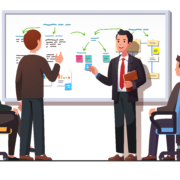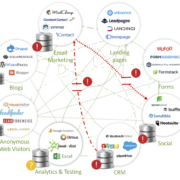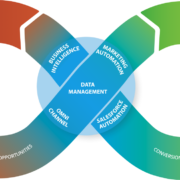
Is your sales team the “real” sellers of your product or service? We are habituated to having a group we call our sales team. We hold them accountable for revenue, give them a quota, and provide them with a target account list. However, depending on the requirements of your sale, the sales salesperson may only have modest influence and control of the sale. Members of the consulting team or content experts may be the “real salesperson(s)”. This issue is common in complex, high-consideration, and consultative sales. It is vital to align the sales roles in consultative and complex sales.
In this vignette, the salesperson, William, has identified an opportunity at one of his target accounts. His company sells complex cyber security services that include a consultative SaaS-based solution for helping clients assess and act on cyber threats. His prospect wants to understand how cyber assessments can be tailored to their specific company operations and whether William’s company can provide sample recommendations, based on current stress-test scenarios, that demonstrate strategies for threat avoidance.
William is a sales process owner but not a cyber SME. He has a qualified buyer with a compelling reason to buy his company services, but he needs to bring in Randy and Mary, the cyber experts, to have the required and complicated consultative dialogues. At this moment in the sales process, William has identified 20% – 30% of the sales process imperatives (Do we have a buyer’s interest? Is there an adequate budget? Do we understand the high-level client aspiration?) He has identified the opportunity but needs consultative support to establish credibility and identify the best options for helping the prospect. The prospect is willing to meet with the consultative team.
This is a fork in the road.
William has done what he can to get to 20% – 30% probability in the sales process. William now essentially transfers the relationship to subject matter experts Randy and Mary, who take the sale forward by building an important consultative relationship with the prospect. William was the “opportunity finder,” and Randy and Mary have now become the “real salespeople.” After all, the prospect does not need the salesperson who they perceive as simply holding the order pad. They want to speak with the experts.
Why is this a critical issue?
If the salesperson can only go 20% – 30% through the sales cycle before bringing in experts, they have likely transferred sales ownership to the experts. Transferring sales ownership too early to experts may compromise the selling process. SMEs tend to focus on solution recommendations, but the important sales process questions may not be asked: What is the business case? Is there a budget? What is the decision process? What is our political strategy? Do we have competitive threats? Many questions may go unanswered.
Early warning signs:
- Management goes to the SMEs for the forecast.
- Cost-of-Sales is too high.
- Incentive plans are not aligned for team selling. The salesperson has become an expensive “deal finder”.
What to do:
- Implement a sales process that orchestrates team selling. The team needs both A+ content (SME’s) and A+ sales process (salesperson).
- Join these efforts into one opportunity or account plan.
- Create team incentives. We win by collaborating as one, and we share in the spoils
- Take sales enablement and increased commercialization seriously. If the salesperson can bring an opportunity to 50%, you are better off.
Contact us to learn more about how to address the strategic sales practices in your organization.









